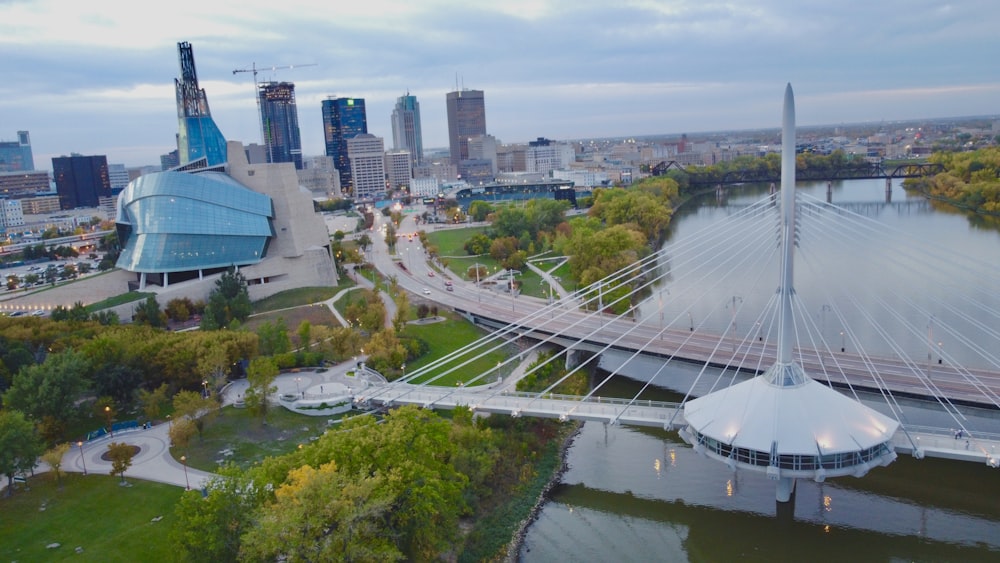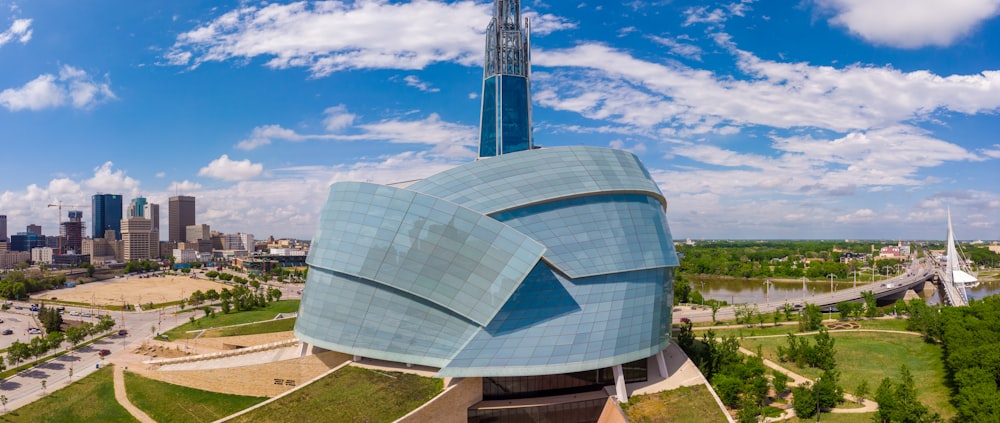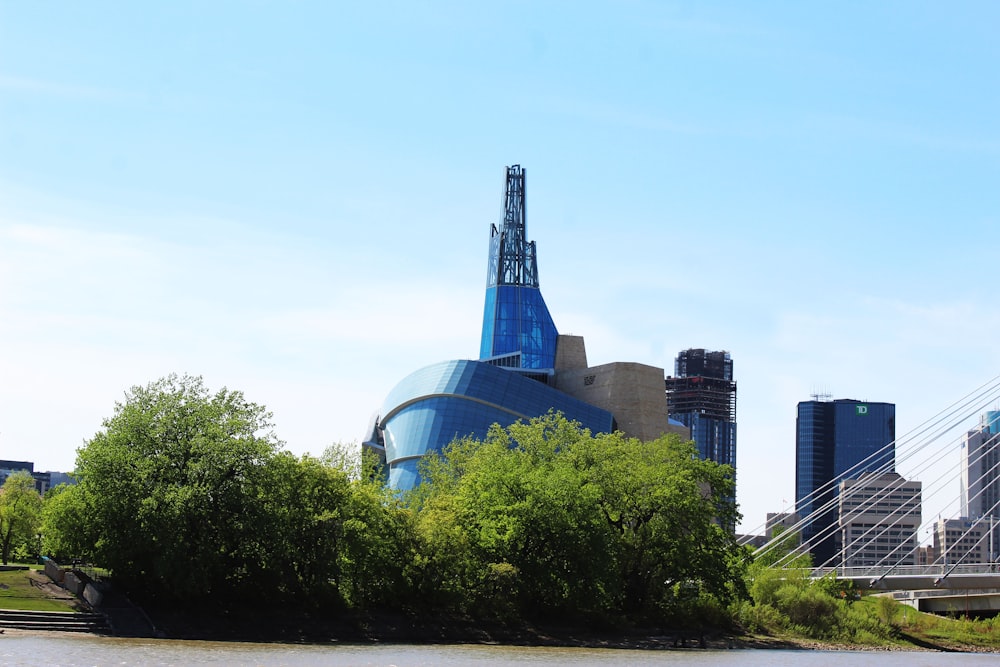Table of Contents Show
A visit to Canada’s Human Rights Museum in Canada, recognized as a world-class facility and one of the top museums in Canada, is a must-visit when in the city. If you are a history buff this is where you need to be!
Here a study that proof why human rights museum is essential to develop as a society.
With gorgeous architecture, dramatic displays, and a wonderful gift store featuring local artists, the human rights museum is certainly worth a day trip. It’s no surprise that it’s routinely rated as one of the top things to do in Winnipeg!

The human rights museum is totally intended and dedicated to human rights for all, including displays that explore human rights topics such as Indigenous rights, disability rights, LGBTQIA2S+ community rights, human lives’ society, and more, as well as war stories, genocide, and other calamities that individuals endure without getting affected.
While it is frequently a touching and emotional event, there are also many stories of victory, courage, and the human capacity to overcome adversity.
Even if you just have a weekend, We recommend putting the Human Rights Museum in Canadian nation at the top of your sightseeing agenda to have a perfect weekend in Canada.

So, here is your complete guide to visiting the Human Rights Museum in Canada.
1. What You Should Know Before Visiting the Human Rights Museum In Canada?
1.1. The Museum’s History
The Canadian Human Rights Museum is located near The Forks, a historically significant place in Winnipeg because Indigenous peoples have lived on this territory for over 6,000 years. The Forks is where the Assiniboine and Red Rivers join, making it a vital trade hub in history.

After many years of world war II, In 2000, a prominent businessman and politician, Israel Asper proposed a human rights museum in Winnipeg, and the idea to establish the human rights museum was unveiled in 2003. Antoine Predock designed CMHR after going through a lengthy selection procedure.
The Museums Act of the Government of Canada was amended in 2008 to plan the new museum. In doing so, it became the first national museum built in 40 years of history, the first national museum located outside of Ottawa, and one of the top museums for great visitor experience across North America and the world.
The human rights museum was established between 2008 and 2012 and formally opened to the public on September 20th, 2014, when the opening ceremony took place.
1.2. The Canadian Museum For Human Rights – Location And Parking
The Canadian Human Rights Museum is located in Winnipeg at 85 Israel Asper Way, directly next to The Forks.

There are hundreds of parking spaces available surrounding the museum (including just across the street), as the same parking lots are frequently utilized by visitors to The Forks.
Please remember that these are paid parking places; you may pay with a debit or credit card at one of the numerous meters around the parking lots. Parking costs $2 per hour right now.
More than 30 bus lines also serve the human rights museum and The Forks. The Winnipeg Transit website can help you identify the best public transit route.
1.3. Hours Of Operation Of The Canadian Museum For Human Rights
Mondays are always closed. We recommend that you refer to the official website or call in before planning your visit to the museum.

I recommend calling ahead to ensure the museum is open, especially if you want to come on a special holiday. The museum is likely to remain closed on Christmas Day, Canadian Thanksgiving, Christmas Eve, and Boxing Day.
Finally, there are periodic closures due to museum work, so check ahead to ensure that the location is open for guests.
1.4. Museum Tours
There are several sorts of museum tours available, including ones that may be taken from the convenience of your own home. Group bookings are also available. Download the smartphone app in App Store or Play Store, a self-guided experience that includes audio, augmented reality, and much more.

The CMHR is also a member of Canoo, a smartphone app that helps new Canadian citizens learn about and celebrate their citizenship. Visit the website of the Institute for Canadian Citizenship to learn more.
For more information about tours, inquire at the front desk, phone 204-2892000, or email tours@humanrights.ca.
1.5. The Museum’s Accessibility
Fortunately, the CMHR is easily available to everyone. The following resources are included:
- The museum is equipped with elevators and ramps.
- Rent a wheelchair or a stroller for free (on a first-come, first-served basis with ID) as well as complimentary cane-seat rentals.
- Admission is free for a support person accompanying a person with special needs.
- Parking and an accessible drop-off entry.
- Six floors of large, accessible private facilities, including a washroom on Level 1 with an adult-sized changing table and motorized transfer lift.
- Service animals are permitted.

The free mobile app is another amazing feature of the CMHR. The app is available in English, French, Québécois Sign Language as well as American Sign Language.
2. What Can You Expect To See And Do At The Canadian Museum For Human Rights?
2.1. Galleries
The museum exhibits core galleries spread across seven floors, including the following:
- What are human rights?
- Indigenous perspectives
- Rights today
- Canadian journeys
- Breaking the silence
- Inspiring change
- Protecting rights in Canada
- Examining the Holocaust
- Turning points for humanity
- Actions count
Each gallery exhibits many collections of photos, audio, video, written accounts, interactive displays, and other things. While the hundreds of stories and photos spread throughout every gallery might be daunting, the collections can also be tremendously inspiring, offering a message of hope and success through every gallery.
Of course, understanding our history allows us to try to do much better in the future. Finally, as stated on the museum’s website, the CMHR seeks to create understanding, promote respect, and stimulate introspection.
2.2. Exhibitions
The museum exhibits several temporary exhibitions at any given time. Métis Memories of Residential Schools: A Testimony to the Métis’ Strength, Behind Racism: Time to Act: Rohingya Voices, Challenging the Way We Think, Mandela: Struggle for Freedom, Ododo Wa: Stories of Girls in War have all been included alongside many others.
When visiting the museum, be sure to look out for the current exhibitions, which are always outstanding.
2.3. Ramps
One of the most remarkable and stunning parts of the museum’s design is the alabaster ramps that are lighted up with LED lights and span about a kilometer in length. The key part is that they literally create a tunnel of light through the gloom, crisscrossing across the core of the museum to connect the galleries.
2.4. Israel Asper Hope Tower
The Israel Asper Tower of Hope, which soars over 100 meters into the air, includes an enclosed observation platform building that provides spectacular views of Winnipeg, including downtown Winnipeg, The Forks, The Red and Assiniboine Rivers, St. Boniface, and the Esplanade Riel Footbridge.
2.5. Events
Keep up to speed on all of the museum’s events, including events such as new installations, film screenings, community meetings, lectures, galas, and more events, by visiting this page. There are also numerous programs available through the museum.
2.6. Visiting The Gift Shop
Make sure to stop by the CMHR boutique for a one-of-a-kind selection of socially aware merchandise. Many of the things are manufactured in Winnipeg and Canada, and there is a lovely assortment of art, jewelry, apparel, books, toys, presents, and so much more to explore.
3. What Are The Admittance Costs?
The museum’s general admission tickets give same-day, unlimited entry to any gallery. As of the time of writing – On Fridays after 5:00 p.m., the museum is free for children aged 6 and under, Indigenous Peoples, members, people accompanying those with disabilities.
There are various days during the year when admission is free, such as Human Rights Day (December 10th). Otherwise, there would be an admission fee, and you can check it on the museum’s official website.
4. Is It Possible To Dine At The Human Rights Museum In Canada?
The ERA Bistro was once located in the CMHR. However, it has since closed. You can dine and drink in specific areas throughout the museum, including the Bonnie & John Buhler Hall.

Remember that you aren’t allowed to eat or drink inside the museum premises, especially in the galleries.
If you want to make a day of it and visit this museum, I highly recommend paying a visit to The Forks nearby, where there are plenty of wonderful local food sellers.
5. Human Rights Museum Controversy
I didn’t think I could write a tour of the Human Rights Museum in Canada without mentioning that the museum has been the subject of some controversy.
The museum has been chastised for its approach to Indigenous heritage, and staff has spoken out about prejudice.
6. In What Ways Can You Help The Human Rights Museum In Canada?

There are several ways to contribute to the Canadian Museum for Human Rights in Winnipeg. You may make a donation, volunteer, or join the organization (this will allow you a discount at the gift shop as well as free admission to the galleries). You may also help the human rights museum by shopping in the gift store!
Closing Thoughts
Finally, everyone should go to the Human Rights Museum in Canada because it provides a powerful and engaging learning experience about global human rights issues.
Visitors can gain a better understanding of human rights issues and their impact on individuals and communities through the museum’s interactive exhibits, inspiring stories, and thought-provoking displays.
Furthermore, the museum fosters a culture of respect, tolerance, and empathy for all people, regardless of race, gender, religion, or culture.
Individuals can gain a better understanding of the importance of human rights, become more informed about global issues, and be inspired to take action to promote a more just and equitable society by visiting the Human Rights Museum. Overall, the Human Rights Museum is a must-see for everyone.
Frequently Asked Question
1. What kind of exhibits can be found at the Human Rights Museum in Canada?
The Human Rights Museum features a range of interactive and thought-provoking exhibits that focus on a variety of human rights issues, including Indigenous rights, discrimination, freedom of speech, and more.
2. Who can visit the Human Rights Museum in Canada?
The Human Rights Museum is open to everyone, regardless of age, race, gender, religion, or nationality.
3. Is the Human Rights Museum in Canada accessible to individuals with disabilities?
Yes, the museum is fully accessible to individuals with disabilities, including those who use wheelchairs or have visual or hearing impairments.
4. How long does it take to tour the Human Rights Museum in Canada?
The amount of time needed to tour the museum can vary depending on the visitor’s interests, but most people spend at least two to three hours exploring the exhibits.
Also, Its house many meeting space and visitor services for group tours. The aim is to encourage reflection and support human rights learning for all.
5. Can I take pictures or videos inside the Human Rights Museum in Canada?
Yes, visitors are allowed to take pictures and videos inside the museum for personal use only.
While you are in there, don’t forget to check the entire exhibit plan on the building’s ground floor, it help you figure out which Indigenous perspectives gallery with manifest destiny exclusive reference exhibit design is best suited for your group, some groups involves young children. As there is also a Garden of Contemplation, which has still-water pools punctuated by dramatic black Mongolian basalt.
6. Is there a fee to visit the Human Rights Museum in Canada?
Yes, there is an admission fee to enter the museum, but there are also discounts available for seniors, students, and families.
Last Updated on by ayeshayusuf






